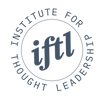
In the world of narrative non-fiction, “interviewing for story” means interviewing to discover turning points in a long-form narrative. It is “code speak” for asking questions that help you understand the motivations and intentions of the people in your story. When you’re interviewing for story, you’re looking for moments of insight experienced by the people you are writing about. In writing articles in the thought-leadership style, we’re also searching for turning points and sharing our own moments of insight. Here’s one way to get started bringing more turning points and moments of insight into the articles you write for your business or about your research:
- Imagine that you were writing a speech and not a report or a story. Write down your ideas in plain yet explanatory language. Lead the reader to your solutions to the problem, sharing along the way how your viewpoint changed (e.g. the turning points) and what led you to the solution.
- Go from Point A to Point B to Point C in a linear fashion. Linear is not necessarily boring. Linear is logical. Now tell that story from top to bottom, but make sure to share those moments when something changed.
If you feel the end result is indeed too standard or too basic, or the linear has become boring after all, then consider some digressions to talk about how your view or your company’s view has changed, your predictions for the future, or how one thing is similar or dislike another. When writing thought-leadership articles or books about solutions to pressing problems, you need to show that you understand problems at a deep level – the practical level, but also the meta level. That’s why understanding motivations, intentions, key turning points (for instance in the project) and reversals is a good thing.
By Rhea Wessel
